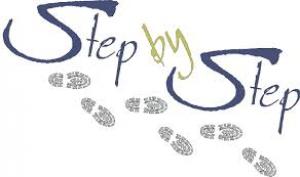Current Article:
Mountain Pose - Tadasana

Mountain Pose - Tadasana
Posture Classification: Primary Standing PostureExperience Level: Beginner, Intermediate and Advanced Practice
Yogaology of Tadasana
Tada translates from ancient Sanskrit into English as: Mountain.Asana translates from ancient Sanskrit into English as: Posture, Position and Seat.
Put them together, (Tada + Asana) = Tadasana, Mountain Position, Mountain Posture.

*Improve posturePurpose of Tadasana: Mountain Pose teaches us the basic and proper alignment for all standing positions.
*Increase energy
*Gain balance
*Improve leg strength
*Raise focus and stamina
*Create stability
*Build support
*Improve respiration and digestion
*Create physical and mental balance
*Gain strength & flexibility in ankles and feet
*Strengthens and shapes the core (stomach and abdominal region)
*Relieve constipation
*Improve circulation
*Gentle stretch for knees & thighs
*Enhance mobility and agility
*Stimulate the brain
We practice to develop poise and strength and to receive profound, subtle benefits. Although, most benefits received can be felt almost immediately.
"We practice on the mat to develop a center approach to life off the mat." - Donna Marie
We have the ability to achieve many benefits from Tadasana when we practice mindfully. Pay particular attention to the inner sensations (feelings). Relax and breathe fully and evenly while practicing this powerful position.
To create Tadasana (Mountain Position) on the mat, follow these step-by-step directions every time you practice.
1. Stand with the feet parallel (side-by-side) or slightly apart.
2. Press the feet fully and evenly onto the ground.
3. As the feet take root, begin to lengthen and extend from the ankles to the knees. Lift the ankles above the heels.
4. The knees are straight with a micro-bend. (Be sure the knees are not locked or hyper extended).
5. Flex the front thigh muscles (the quadriceps) and lift the kneecaps to protect the hamstrings while in standing postures.
6. Tuck the tailbone down slightly so it points to the ground. Feel how this support the lower back.
7. Lift through the belly to bring the natural curve in the lumbar into balance.
Check for this curve. If there is little or no curve, then the tailbone is too far forward. Adjust the tailbone until you feel the normal curve.8. Inhale and draw the lower abdomen in slightly and lift the chest.
9. Exhale - relax the shoulder blades down the back.
10. Inhale and continue to extend through the crown of the head.
11. Exhale and extend the arms along the sides of the body
, palms resting against the outer thighs,
fingers together.
12. The chin is level with the ground and the ears are above the shoulders.
13. Gently close the eyes and visualize a mountain. Call to mind what it represents for you. Perhaps strength, stability and stillness.
14. Maintain a stable and comfortable position for 3 - 6 rounds of full and even three-part breaths.
Remember the 3 essential keys when practicing15. When satisfied, remain still, open the eyes and take a few moments to observe how you feel.
a. A position is one that is steady and pleasant.
b. A position is one that is harmless in thought, word and deed
c. The self talk is positive
EXCELLENT!
Repeat practice, without long periods of interruption, to receive the many powerful benefits from practicing Mountain Pose.
Check your understand. Notice how to grow this posture. Start with the feet. Align the body from the toes all the way to the crown of the head. Relax and Breathe.
